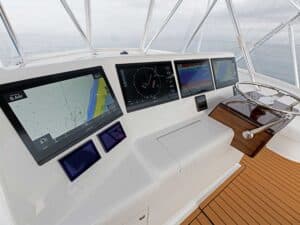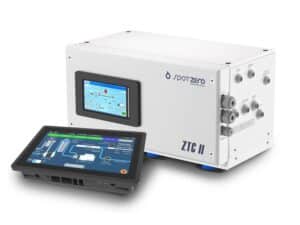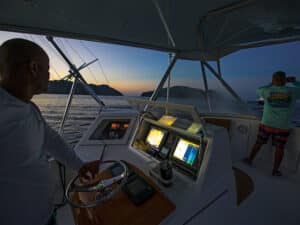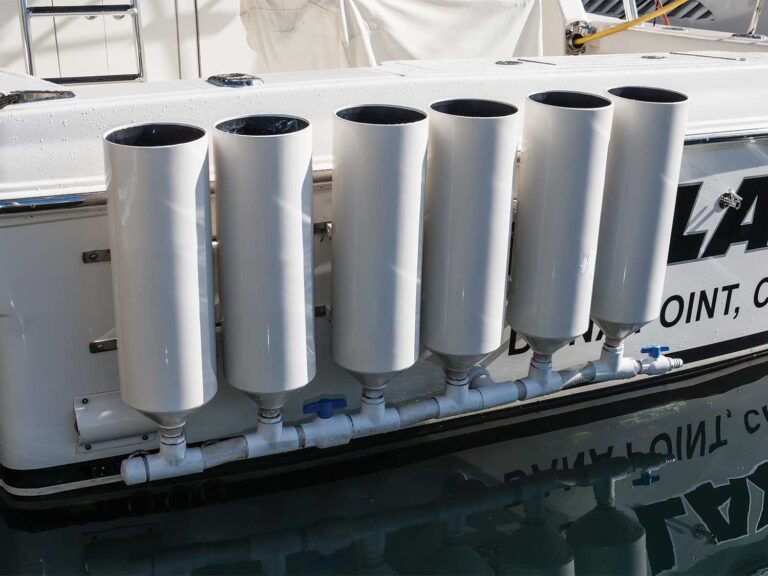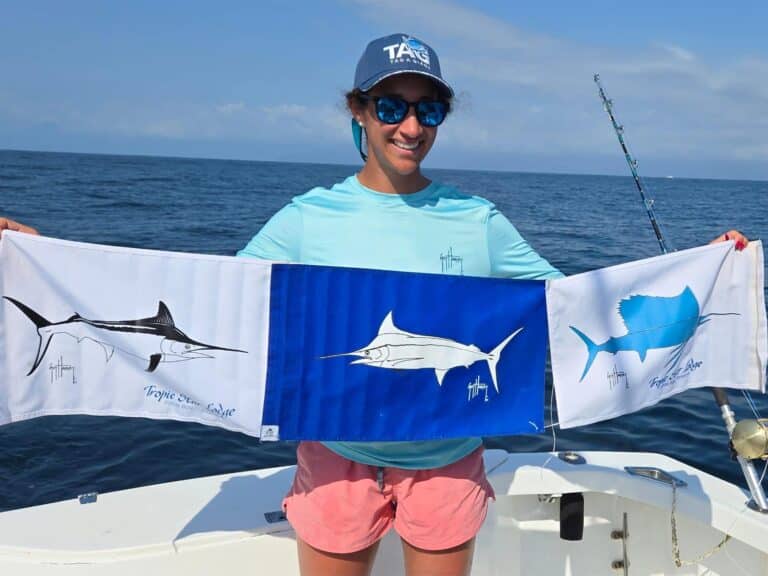
Special delivery: Sign up for the free Marlin email newsletter. Subscribe to Marlin magazine and get a year of highly collectible, keepsake editions – plus access to the digital edition and archives.
When we talk about technology in sport fishing, the natural first thoughts are to look at the bridge and the electronics suites. In recent years, some great technology has been added to the bridge, starting, of course, with omnidirectional sonar.
Roughly 20 years ago I had a “searchlight” sonar, which was an incredible tool. At that time, omni was in use in various commercial-fishing applications, especially the commercial tuna boats, but transducers for omni sonars were prohibitive for sport-fishing applications. Thanks to advancements by electronics engineers and boatbuilders, that is no longer the case. In today’s world, it’s evident that without omni sonar, you simply cannot compete consistently when it comes to tournament fishing. It has changed the game entirely, as we discuss elsewhere in this issue.
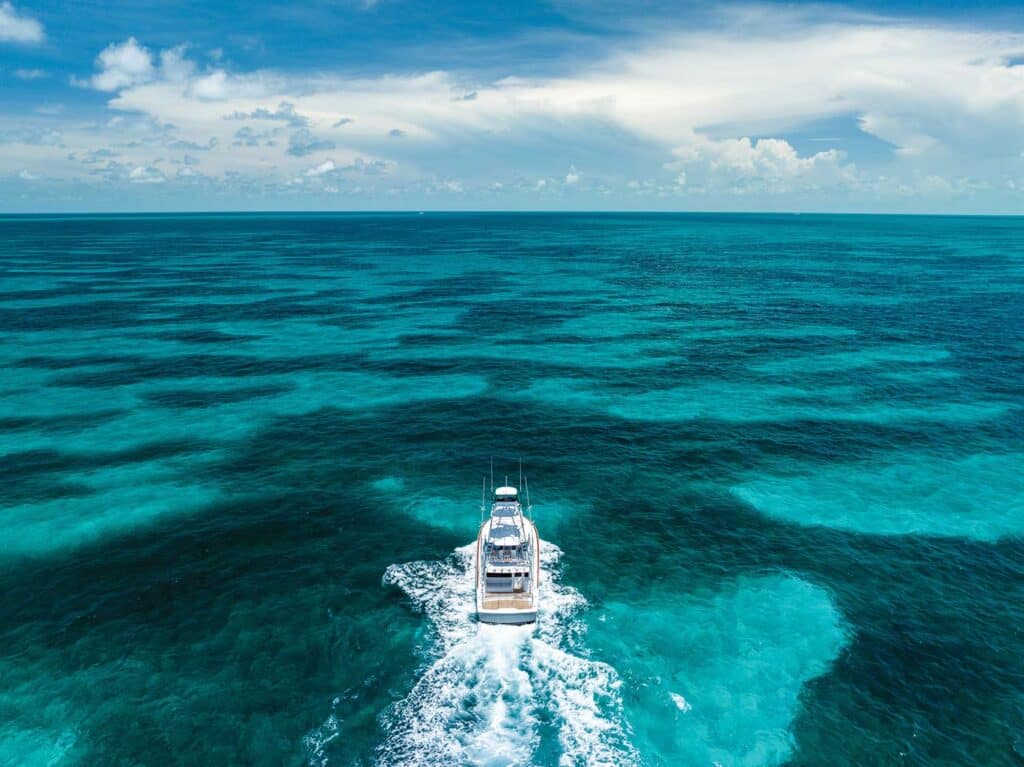
Night vision technologies are continually improving, thanks to companies like Flir and Sionix. Radar overlay, along with up-to-date weather information from SiriusXM Marine Weather, has given us instant access to real-time weather and water data. Then there is Starlink—an incredible game-changer for communication and entertainment systems. With Starlink, you have a high-speed connection anywhere around the globe 24/7. It’s a great tool for those of us who love to travel.
However, anyone worth his or her salt who runs a sport-fishing boat knows that the care, maintenance and ability to repair systems while in remote locations are paramount to a smooth trip. When companies invest to develop, improve or integrate new technology in this area, it may not make the splashy headlines, but it provides a great improvement to the overall operation. Keeping systems fresh, updated and running smoothly requires attention and preventive measures to achieve and sustain peak performance.
Several companies have really raised the bar for boat operations with game-changers that are beneficial to the boat’s health, and we can only hope that they and others continue to invest in new innovative products.

Spot Zero
One of the biggest nuisances that boat owners and crews have fought over the years is the quality of dock water. According to the engineers at Spot Zero, even our “good” water in our slips at home still contains over 500 ppm of dissolved solids, meaning every milligram of water contains 500 pieces of organic material, minerals and chemicals.
This is why we had difficulty keeping the boat in top condition, especially in places like the Bahamas and Mexico. As the folks at Spot Zero explain it, the high contaminant content is basically a “microscopic rubbing compound” that is terribly abrasive to the exterior surfaces, not just paint or gelcoat, but also metal, glass—all of it. Frequent waxing, along with soaping and a good chamois at the end of every day, was mandatory to help us reduce the foul impacts of dirty water. Frequent vinegar washings helped reduce the spotting from the salt deposits that accumulated after the day’s washdown, even after a thorough chamois job.
Then, along comes Spot Zero systems. They have had an incredible impact on the well-being of boats’ exterior finishes. Their innovative and compact solutions for onboard combination watermaker/purifiers and portable systems are now a required tool for any boat’s overall care. Much like a Starlink, the Spot Zero systems are a necessity for today’s new builds. Responsible owners and captains are readily adapting them into their travel packs if they cannot retrofit them into the boat. Upon returning home, they integrate them into their home dock water system as well.
These mobile units—known as the Mobile Pro for boats from 40 to 85 feet and the Mobile Pro Mini for boats up to 40 feet—are showing up on docks all over the world. Designed for robust and lasting performance, the units are constructed with a corrosion-resistant unibody anodized aluminum frame with all internal plumbing, resulting in a small footprint. The unit features built-in maintenance technology that tracks membrane hours and other data, which is ultimately all displayed on an easy-to-read LCD touchscreen. Easy end-plate removal allows for quick and simple membrane replacement. If you can’t fit a permanent unit in the engine or pump room, these mobile units are ready to go anywhere from Cabo to Cape Verde.
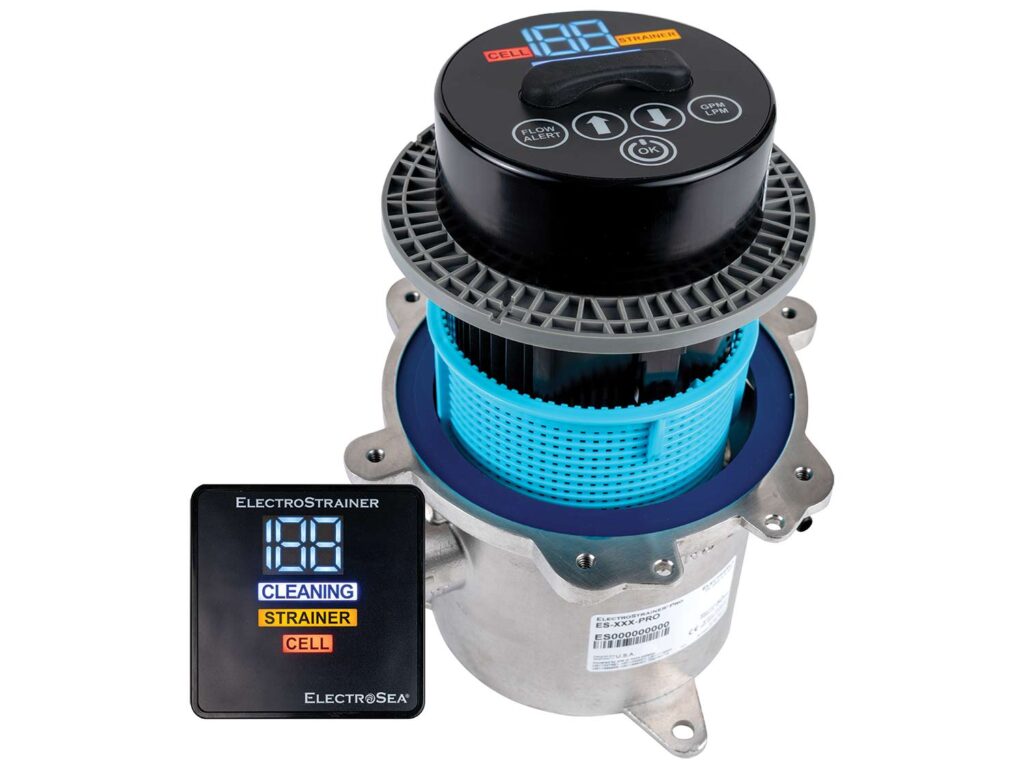
ElectroSea
There has always been one incessant, absolute pain in the ass on every boat with continual raw water flow. That problem is organic growth and biofouling in sea chests, strainers, air conditioning systems and the like. Sea growth will reduce AC and refrigeration cooling system efficiency as well as clog drain lines and internal piping.
Necessity is the mother of invention, but it took a boat owner with immense professional knowledge in medical technologies, involving liquid chemical sterilants and hollow-fiber filtration, among other subjects, to solve this age-old problem. ElectroSea introduced the ClearLine System in 2017 and has not looked back on continual product development with seal-less pumps and growth prevention systems.
The ElectroStrainer Pro is the latest upgrade from ElectroSea. Building off the success of its predecessor, the original ElectroStrainer, which was released in 2022, the ElectroStrainer Pro combines all the elements necessary for integration into a boat’s raw-water systems with some notable improvements.
Developed and manufactured for the rigors of the saltwater environment, the Pro features specialized metallurgy in a no-weld, one-piece canister made with what is known as super duplex 2205 stainless-steel alloy, noted for its strength and corrosion resistance. Inside the canister is a hydrodynamically optimized strainer basket designed to strain debris and to diffuse the chlorinated water that is created by the biofouling-prevention device. This device utilizes advanced electrochlorination technology that creates chlorine in low levels with incoming seawater, making life for barnacles and other marine growth unsustainable.

The added beauty of this system is that it also has a control head integrated to the unit that features an LED screen user interface for easy system checks. The ultrasonic ClearVis Flow Sensor monitors the amount of effective raw water running through the system constantly. The ElectroStrainer Pro alerts the user if and when the strainer basket needs attention.
Basically, as raw water comes into the boat to feed your systems, the electrochlorination puts a safe amount of chlorine, similar to what is in our drinking water, into its strainer basket. As water is treated in the basket and then distributed through the boat’s systems, it maintains a growth-free environment for raw water to do its job.
The ElectroStrainer Pro units are available in four inlet/outlet sizes with different incoming flow rates. On today’s large sport-fishing platforms, more than one unit may be necessary to service all the boat’s incoming raw-water needs, especially when considering the massive requirements for chilled-water air conditioning systems, refrigeration systems, livewell systems and a host of other incoming raw-water systems. Retrofit integration into any boat is possible with the compact and simple design of the units. If you are tired of routinely having to clean your sea strainers, having to snake your outfall pipes, and acid-clean your AC and refrigeration systems every couple of months or weeks, you need to look into this time- and money-saving technology.

Lifesaving Technology
I get to go on a lot of different boats, and I see a lot of things. One thing I’ve noticed is boats are venturing farther from shore than ever these days, and not necessarily in large sport-fishers. Plain and simple, I’ve seen a lot of things that cause me concern about this new trend, especially in the area of safety equipment and preparedness. We all know things happen at the least convenient time, and hardly ever in good conditions. My crew and I take our safety, and the safety of our guests, very seriously. Having a solid and known plan is the first step in safety. We are proactive to mitigate as many unpredictable situations as we can while remaining calm, cool and collected when they do arise. But even the most prepared crew and boat can find themselves in a serious situation.
One of the greatest assets to our safety today is satellite communications. I’m not talking about Starlink and Satcom, although they are a huge asset to have aboard. I’m talking about the personal connectivity safety equipment now available. So many companies have great, reasonably priced solutions for your safety at sea, hunting, hiking or doing any remote outdoor activity. For the offshore fisherman, there simply is no excuse to not take advantage of the technology available for help on the water.
On the big boats and on our personal center-console, we have lifesaving technology products at the ready. They are checked and updated annually, as needed. I’m a ditch bag fan. I like having an EPIRB and all the associated gear necessary, including lights, strobes, a mirror, a whistle and flares, both electrical and pyrotechnical.
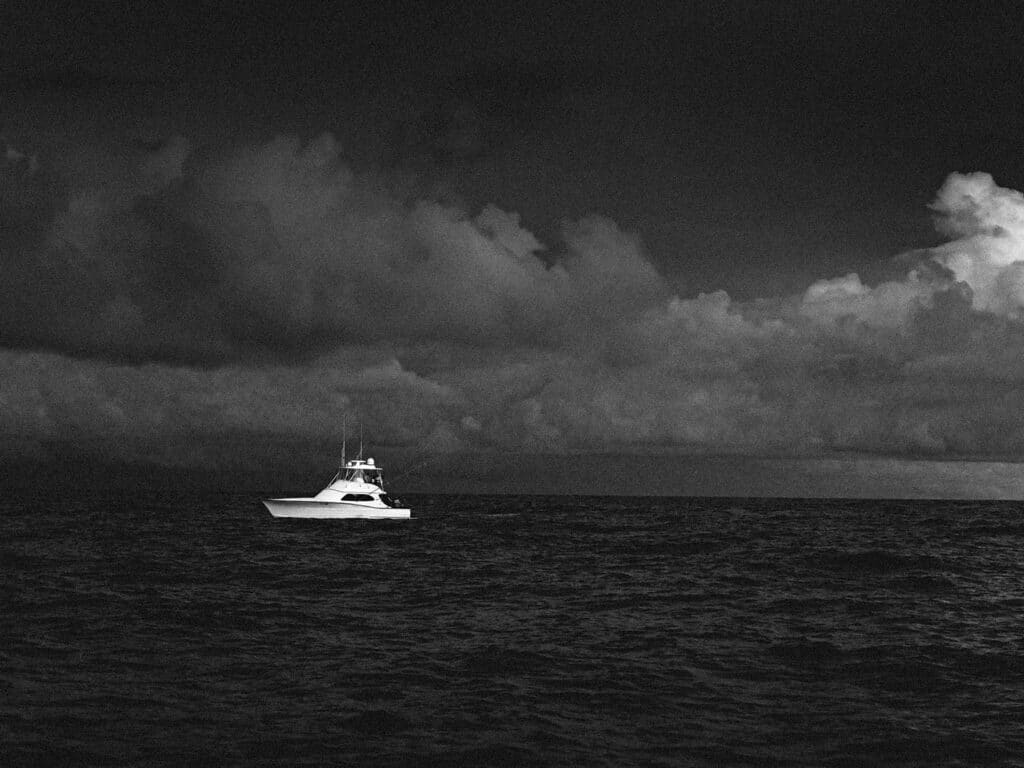
The new ACR GlobalFix V5 AIS EPIRB with Return Link Service and a mobile app is the top of the line in EPIRB safety, and worth every penny for the crew that ventures far offshore or to global destinations. One of the things we see most after purchase is that the EPIRB is forgotten and usually out of date with dead batteries. Now, with the GlobalFix V5 and smartphone connectivity, monitoring and updating your EPIRB is super easy. You simply put your mobile phone next to the unit, and this opens the ACR Product app. This app provides a world of information on the beacon status, including battery life, the number of global navigation satellite system (GNSS) self-tests it has completed, and the amount of time the EPIRB has been active since purchase. GNSS self-tests are seen on a pinpoint map showing where they were completed, the time and date of the set, the length of time to obtain a fix, the number of satellites needed to get the fix and its accuracy. This connectivity allows the user to confirm the status and ensure the EPIRB is working.
Return Link Service is the confirmation to whoever has triggered the EPIRB that the distress message has actually been received. A flashing blue light on the top of the unit confirms the precise location and identity of the beacon’s owner. Knowing your distress message and position have been confirmed is a huge relief during a bad situation.
Read Next: Using Satellite-Based Technology in Offshore Fishing.
No matter where you are in the world—and some of us find ourselves in fairly remote places with no Coast Guard coverage—the V5 attains its signal and position accurately through GPS, Galileo or GLONASS networks. Once activated, the unit will transmit distress signals and your position with accuracy to within 100 meters to the worldwide COSPAS-SARSAT search-and-rescue satellite network. The AIS signal is also activated to transmit to nearby ships and other boats. Vessels within VHF AIS reception will see your distress call and hopefully react to reduce rescue time dramatically, sometimes before the search-and-rescue operations can respond.

Another item often forgotten aboard is the one thing that could really save your skin when all else is lost—the life raft. Life raft technology has dramatically improved, and owners have a plethora of choices to suit their specific application. Manufacturers such as Switlik, Revere, Viking and Offshore Stream make products to fit every situation from nearshore to far offshore commercial applications, for both small and large boats alike. I cannot stress enough the importance of finding the right life raft for your specific application. We’ve come a long way from the days of the one-size-fits-all approach. The size of your vessel, your travel plans—it all needs to be considered when selecting the appropriate life raft.
Having the practical knowledge of how they work and how to deploy them is another key part of the preparedness for both crew and owner. To gain proficiency in the use of life rafts, find or buy an out-of-date unit and deploy it. Utilize your swimming pool or water near your dock to experience how you’d get into the raft—and if you can even get in the raft! Not all rafts are created equal, so make sure you have one that you know you can climb aboard when it matters most.
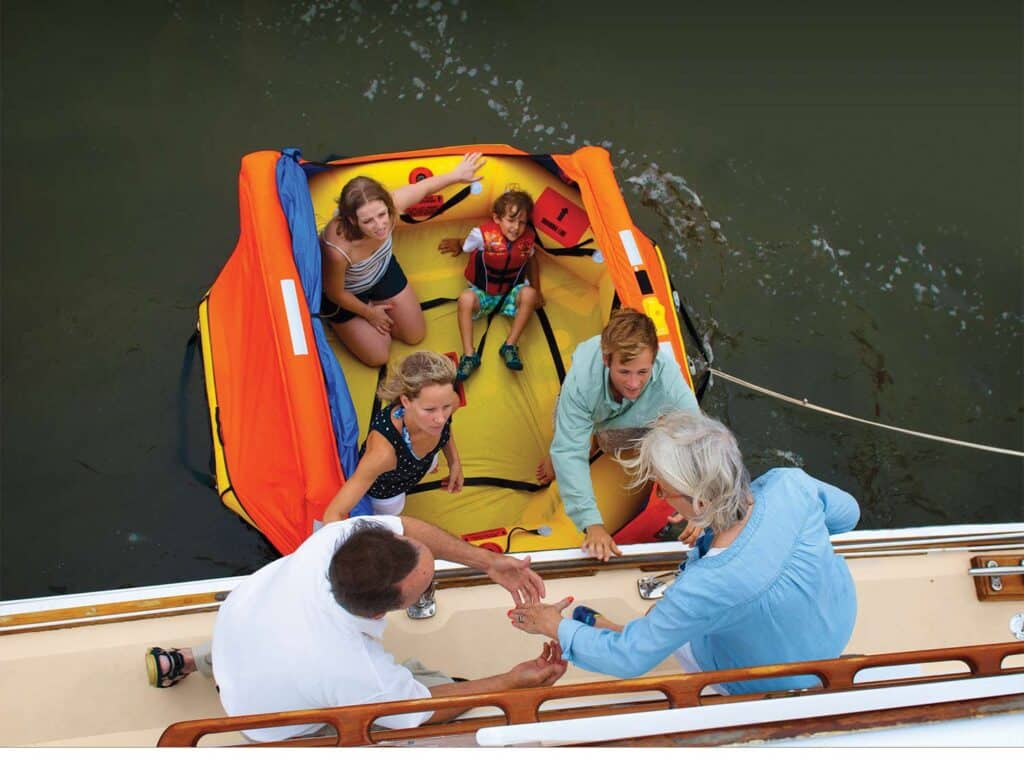
Annual inspection of your life raft, your EPIRB and all safety gear is a necessity. If you get put in the water, which is the last possible scenario after all exercises to save the vessel are exhausted, you should have the best raft and PFDs with lights available for night rescue. It’s an easy question to answer: What’s your life worth?
The good news is we have all types of technology that can improve our overall experience while aboard and to keep us safe. While you’re researching the latest piece of electronics, tackle or fish-catching gizmo, don’t forget about those foundational components that can help produce a better onboard and ownership experience.
